
Fowl Meadow
Fowl Meadow Grass (Poa serotina), also called False Redtop, has two to four spikelets (shown here),…

Fowl Meadow
Fowl Meadow (Poa serotina), also called False Redtop, has two to four spikelets, sometimes five flowered.…

Fowl Meadow
Fowl Meadow (Poa serotina), also called False Redtop, has two to four spikelets, sometimes five flowered.…
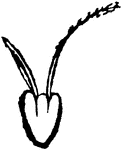
Fowl Meadow
Fowl Meadow (Poa serotina), also called False Redtop, has two to four spikelets, sometimes five flowered.…

Fowl Meadow
Fowl Meadow (Poa serotina), also called False Redtop, has two to four spikelets, sometimes five flowered.…

Wood Meadow Grass
Wood Meadow Grass (Poa nemoralis) grows from eighteen inches to two feet high. It has a perennial, creeping…

Rough-Stalked Meadow Grass
The Rough-Stalked Meadow Grass (Poa trivialis) has webbed florets and a five-ribbed outter palea. The…
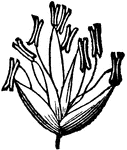
Rough-Stalked Meadow Grass
The Rough-Stalked Meadow Grass (Poa trivialis) has webbed florets and a five-ribbed outter palea. The…
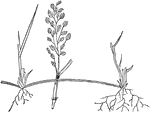
Creeping Meadow Grass
Creeping Meadow Grass (Eragrostis reptans) is found on the gravelly banks of rivers, from New England…
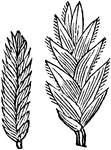
Creeping Meadow Grass
Creeping Meadow Grass (Eragrostis reptans) is found on the gravelly banks of rivers, from New England…

Creeping Meadow Grass
Creeping Meadow Grass (Eragrostis reptans) is found on the gravelly banks of rivers, from New England…

Creeping Meadow Grass
Creeping Meadow Grass (Eragrostis reptans) is found on the gravelly banks of rivers, from New England…

Creeping Meadow Grass
Creeping Meadow Grass (Eragrostis reptans) is found on the gravelly banks of rivers, from New England…

Creeping Meadow Grass
Creeping Meadow Grass (Eragrostis reptans) is found on the gravelly banks of rivers, from New England…

Quaking Grass
Quaking Grass (Briza media) has an erect panicle with very slender spreading branches. The spikelets…

Quaking Grass
Quaking Grass (Briza media) has an erect panicle with very slender spreading branches. The spikelets…
Sheep's Fescue Grass
Sheep's Fescue (Festuca duriuscula) is known by its narrow panicle. It has short, tufted, bristle-shaped…

Sheep's Fescue Grass
Sheep's Fescue (Festuca duriuscula) is known by its narrow panicle. It has short, tufted, bristle-shaped…
Meadow Fescue
The panicle of the Meadow Fescue (Festuca pratensis) is nearly erect, branched, close, and somewhat…

Meadow Fescue
The panicle of the Meadow Fescue (Festuca pratensis) is nearly erect, branched, close, and somewhat…
Tall Fescue Grass
Tall Fescue Grass (Festuca elatior) is found commonly in moist meadows. The panicle is contracted, erect,…
Tall Fescue Grass
Tall Fescue Grass (Festuca elatior) is found commonly in moist meadows. The panicle is contracted, erect,…
Chess Grass
The Chess Grass (Bromus secalinus), also called Willard's Bromus, has a spreading, slightly drooping…
Chess Grass
The Chess Grass (Bromus secalinus), also called Willard's Bromus, has a spreading, slightly drooping…

Chess Grass
The Chess Grass (Bromus secalinus), also called Willard's Bromus, has a spreading, slightly drooping…
Chess Grass
The Chess Grass (Bromus secalinus), also called Willard's Bromus, has a spreading, slightly drooping…
Perennial Rye Grass
The Perennial Rye Grass (Lolium perenne) has a smooth, erect stem growing from fifteen inches to two…

Perennial Rye Grass
The Perennial Rye Grass (Lolium perenne) has a smooth, erect stem growing from fifteen inches to two…
Couch Grass
Couch Grass (Triticum repens) is also referred to as Quitch Grass, Twitch Grass, Dog Grass, and Chandler…

Couch Grass
Couch Grass (Triticum repens) is also referred to as Quitch Grass, Twitch Grass, Dog Grass, and Chandler…

Wood Hair Grass
Wood Hair grass (Aira flexuosa), also known as Common Hair grass, is a common grass found on dry and…

Wood Hair Grass
Wood Hair grass (Aira flexuosa), also known as Common Hair grass, is a common grass found on dry and…
Wild Oat Grass
Wild Oat Grass (Danthonia spicata), also referred to as White Top grass, and Old Fog grass, is common…

Wild Oat Grass
Wild Oat Grass (Danthonia spicata), also referred to as White Top grass, and Old Fog grass, is common…

Wild Oat Grass
Wild Oat Grass (Danthonia spicata), also referred to as White Top grass, and Old Fog grass, is common…
Downy Oat Grass
The Downy Oat Grass (Trisetum pubescens) is naturalized in chalky soils and on such soils its leaves…
Meadow Oat Grass
Meadow Oat Grass (Avena pratensis) is a perennial grass that grows to a height of about eighteen inches.…

Meadow Oat Grass
Meadow Oat Grass (Avena pratensis) is a perennial grass that grows to a height of about eighteen inches.…

Meadow Oat Grass
Meadow Oat Grass (Avena pratensis) is a perennial grass that grows to a height of about eighteen inches.…
Yellow Oat Grass
The Yellow Oat Grass (Avena flavescens) is a perennial grass siutable for dry meadows and pastures.…

Yellow Oat Grass
The Yellow Oat Grass (Avena flavescens) is a perennial grass siutable for dry meadows and pastures.…

Tall Meadow Oat Grass
Tall Meadow Oat Grass (Arrhenatherum avenaceum), or Tall Oat Grass is the avena elatior of Linnaeus.…
Tall Meadow Oat Grass
Tall Meadow Oat Grass (Arrhenatherum avenaceum), or Tall Oat Grass is the avena elatior of Linnaeus.…
Meadow Soft Grass
The Meadow Soft Grass (Holcus lanatus), also referred to as Velvet Grass, has its spikelets crowded…
Sweet-scented Vernal Grass
Sweet-scented Vernal Grass (Anthoxanthum odoratum) has three-flowered spreading spikelets. The lateral…

Sweet-scented Vernal Grass
Sweet-scented Vernal Grass (Anthoxanthum odoratum) has three-flowered spreading spikelets. The lateral…

Sweet-scented Vernal Grass
Sweet-scented Vernal Grass (Anthoxanthum odoratum) has three-flowered spreading spikelets. The lateral…
Reed Canary Grass
The Reed Canary Grass (Phalaris arundinacea) has a panicle that is slightly branched, clustered, and…
Crested Dog's Tail
The spikes of the Crested Dog's Tail Grass (Cynosurus cristatus) are simple and its spikelets awnless.…
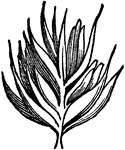
Crested Dog's Tail
The spikes of the Crested Dog's Tail Grass (Cynosurus cristatus) are simple and its spikelets awnless.…
Common Millet
The Common Millet (Panicum miliaceum) flowers in large, open, nodding panicles. The leaves are lance-shaped…
Finger-spiked Wood Grass
Fiinger-spiked Wood Grass (Andropogon furcatus) grows about four feet high. The leaves are smooth, the…

Finger-spiked Wood Grass
Fiinger-spiked Wood Grass (Andropogon furcatus) grows about four feet high. The leaves are smooth, the…

Finger-spiked Wood Grass
Fiinger-spiked Wood Grass (Andropogon furcatus) grows about four feet high. The leaves are smooth, the…

Finger-spiked Wood Grass
Fiinger-spiked Wood Grass (Andropogon furcatus) grows about four feet high. The leaves are smooth, the…

Chinese Sugar Cane
The stem of Chinese Sugar Cane (Sorghum nigrum), also known as Sorgho, or Sorgho Sucre, rises from six…

Indian Corn
Maize known as corn by most English-speakers, is a cereal grain domesticated in Mesoamerica and subsequently…
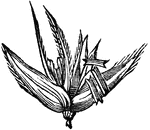
Indian Corn
Maize known as corn by most English-speakers, is a cereal grain domesticated in Mesoamerica and subsequently…

Indian Corn
Maize known as corn by most English-speakers, is a cereal grain domesticated in Mesoamerica and subsequently…

Indian Corn
Maize known as corn by most English-speakers, is a cereal grain domesticated in Mesoamerica and subsequently…